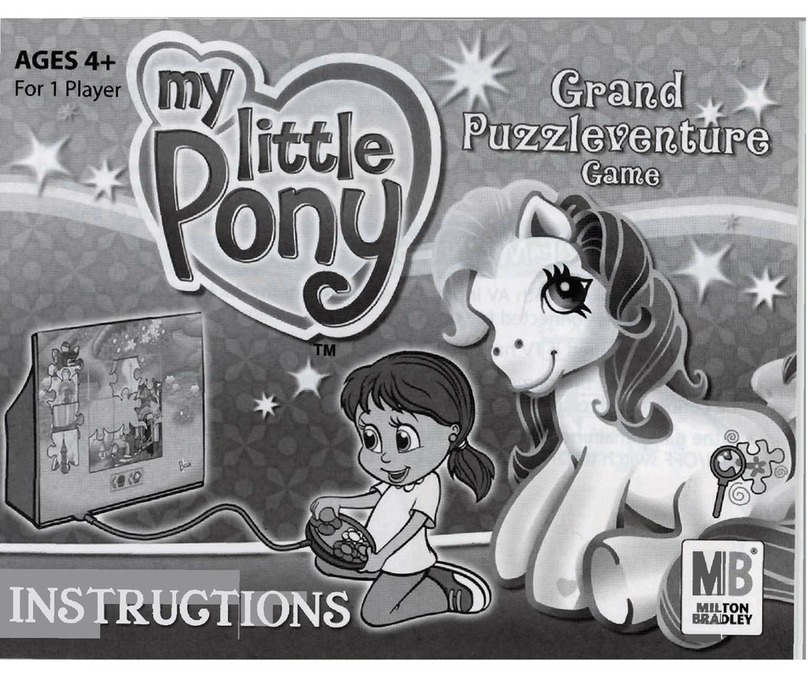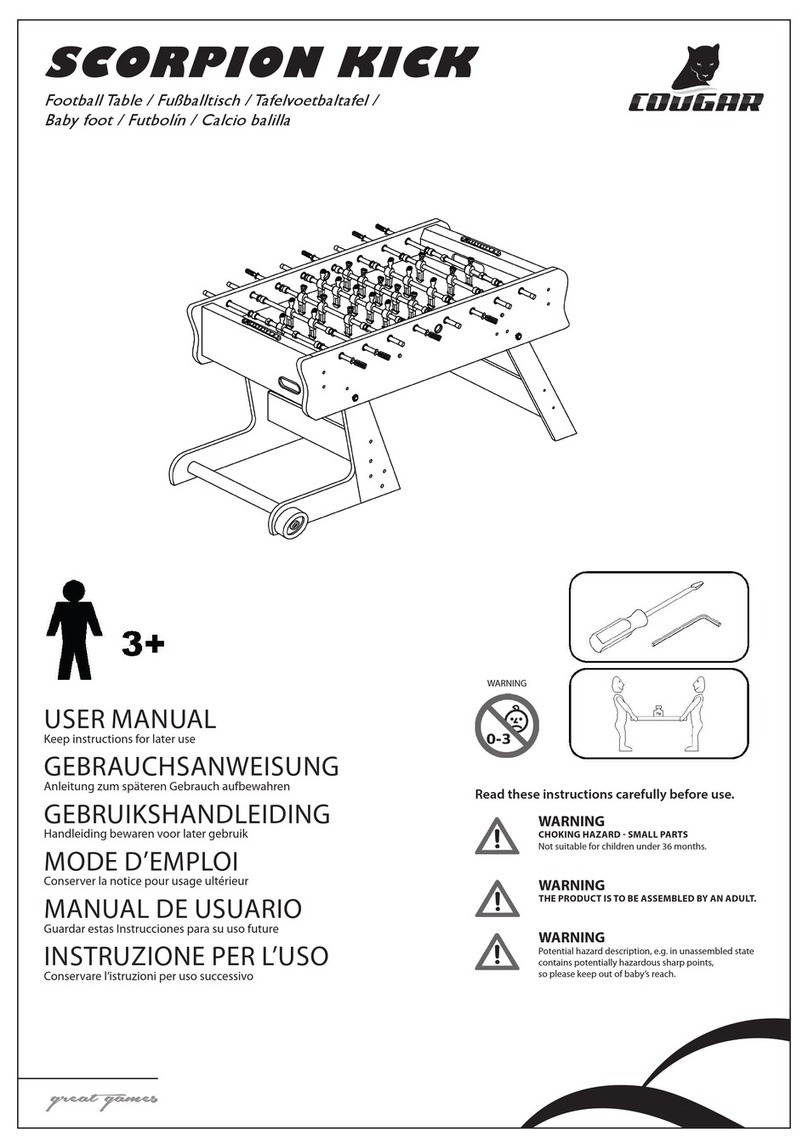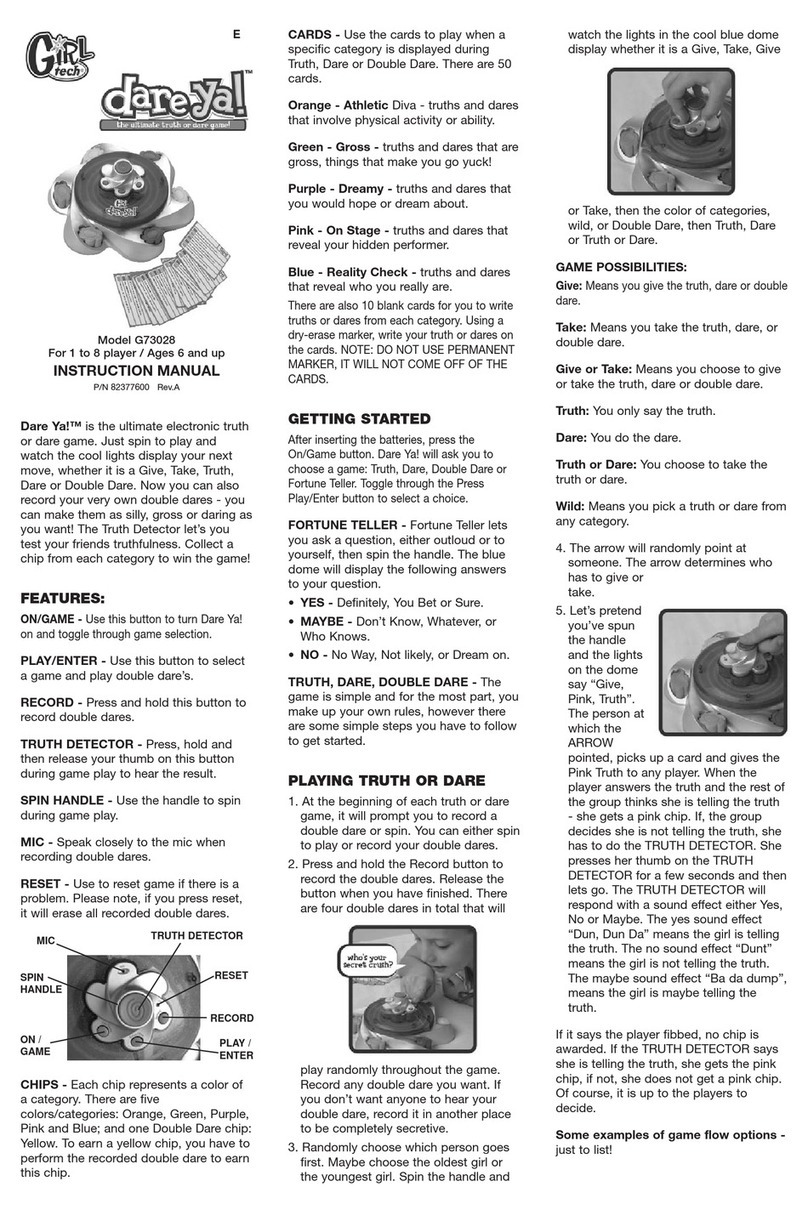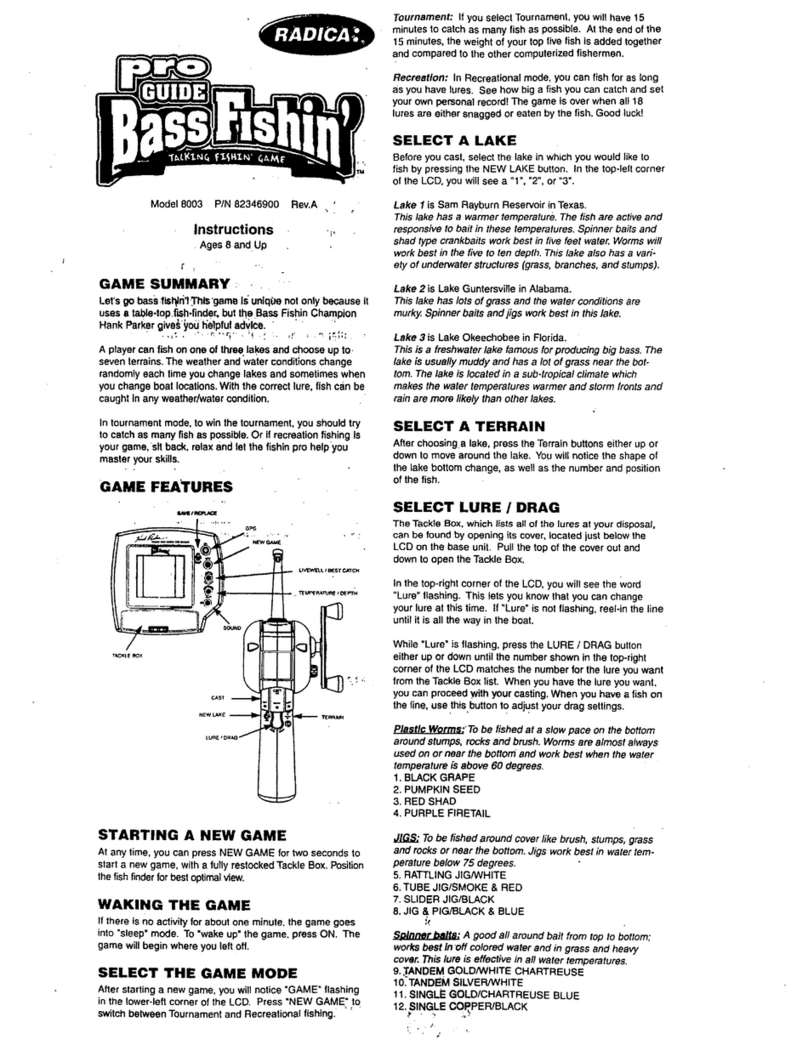Cryptic Comet Solium Infernum User manual

I M



C
Designed and Programmed by
Victor J. Davis
Digital Art by
Matt Bradbury
Katie Davis
David North
Ben Sones
In Game Flavor Text by
Russell Marsh
Music By
Stian Stark
Manual Editing and Flavor Text by
Russell Marsh
Manual Layout by
Katie Davis
Testers
Nikolaj Andersen
Harvey Bernstein
David Bove
Joseph Builth-Williams
Sam Combs
Markus Dietrich
Pascal Di Folco
David Ellsworth
John McCulloch
Dan Montgomery
Vincent Royer
Kevin Santosuosso
Erez Schatz
David Schreiber
Justin Stapleton
Aaron Teschner
Ilya Zushinskiy
©2009 Cryptic Comet
All rights reserved. No part of this book may be reproduced or transmitted in any form by any means, electronic, mechanical,
photocopying, recording or otherwise, without the prior written permission of publisher.

Solium Infernum
5
. I
Welcome to Solium Infernum, the turn-based strategy game that lets you play as an Archfiend battling for the Infernal rone
of Hell. is manual will provide you with all the information you need to start playing the game.
Minimum System Requirements
Windows XP/Vista
1.2 GHz Intel Pentium 4 or AMD Athlon processor or equivalent
256 MB RAM
32 MB Video Card capable of 1024 by 768 resolution
CD-ROM drive if installed via CD-ROM
200 MB of free hard drive space
Serial Key
After purchasing the software you will receive an email containing a unique serial key. When you first start, the game will
prompt you for this key, which must validate in order to continue. At no point will Solium Infernum use the Internet to
contact a validation server; Internet access is not required to play.
Installation
Via Digital Download: After downloading the software from our trusted e-commerce provider, double-click the
downloaded file then follow the installation instructions.
General Technical Tips and Warnings
• Solium Infernum uses Adobe Director, which can grow sluggish on computers that have not been rebooted after a
significant amount of time. Reboot your machine if you experience delayed response to mouse clicks or if you notice
general slowness.
• If you experience unexpected script errors, or if the program will not run, try the game in a Windows-compatibility
mode. Right-click the game’s shortcut and select Properties then the Compatibility tab. Experiment with these
compatibility settings for best fit.
• Because Adobe Director uses a script language, map creation and AI turns can sometimes seem quite long. Wait times
may exceed three minutes on rare occasions when multiple, grand mathematical calculations must be performed.
. M M
After starting the game you will encounter the Main Menu screen. e following options are available:
Single Player: Click this button to continue, start, or load a single player game. You are given these choices in both
Normal and Iron Man game modes. Normal games allow you to save multiple times. Iron Man restricts your save
opportunities to when quitting the game, and Iron Man only maintains a single copy of this save. In Iron Man games
there are no “do overs.”
Multiplayer: Click this button to host a new multiplayer game or to load an existing multiplayer game.
Create & Edit Avatar: Click to create a new Archfiend Avatar or to edit an existing one.
Options: Click to adjust the game’s audio settings.
Quit: Click to leave the game and return to your desktop. (Clearly, a foolish thing to do.)
. S N G H N G
Common Settings
Once you click New Game or Host New Game from the single player or multiplayer menu, you will be directed to the
New Game Settings Menu, where you will decide the parameters for the game you wish to play. ere are several, key
characteristics you may change:
Map Size: is drop-down box selects the overall dimensions of the map. Small maps are 12 hexes by 12 hexes. Normal
maps are 14 by 12 hexes. Large maps are 16 by 12.
Map Type: is drop-down box selects the general layout of the map’s terrain.
Places of Power: is drop down-box selects the frequency of occurrence for Places of Power.

Solium Infernum
6
Game Length: is drop-down box selects the number of Conclave Tokens that must be drawn to convene the Infernal
Conclave and, thus, end the game by choosing the Archfiend with the most Prestige as Ruler of Hell (cf. Winning the
Game, 3.4). Short games require that 10 tokens be drawn. Normal games require 15 tokens. Long games require 20. Epic
games requires 25.
Player Symbol Selection: Use these horizontal arrows to select a symbol or icon to represent each player, be they AI or
human. ere are 10 unique symbols from which you can select. e default value, a “?”, indicates a random selection.
Single Player Settings
Select an Archfiend Avatar: is data box selects the Archfiend Avatar which will represent you on the field. Your
avatar is created in the Create & Edit Avatar Menu, accessible from the Main Menu screen. Upon clicking the wax seal
next to the data box, you will be offered a list of avatars from which to choose.
Select Your Opponents: is data box selects AI opponents that you will face during the game. Upon clicking the wax
seal next to the data box, you will also be offered a list of AI avatars from which to choose. You must choose at least three
opponents to start the game.
Multiplayer Settings
Game Type: is drop-down box selects whether you are creating a Play By eMail or Hot Seat game.
Game Name: Enter a unique name for the game, which will be used to create a folder containing the save game
components of a PBeM game.
Enter Your Email Address (Game Host): Enter your email address in this text box.
Select An Archfiend Avatar (Game Host): is data box selects the Archfiend Avatar that you, the Game Host, will use
in the game. Your avatar is created in the Create & Edit Avatar Menu, which is accessible from the Main Menu. Upon
clicking the wax seal next to this data box, you will be offered a list of avatars from which to choose.
Opponent Selections: is data box either selects AI opponents that you will face or allows you to enter the email
addresses of human players who will participate in the game. If you selected Hot Seat, you will now pick an avatar for
each human player rather than submit their email addresses. A toggle to the left of each entry selects whether the player
is AI or Human. Like before, you must choose at least three opponents to start the game.
. L G
Here you may choose to load a game that was saved from a previous session. Click the name you wish to load, then click
Load to continue or Delete to permanently remove it from the list.
. C E A
Here you may create and edit avatars for the game. An avatar represents your starting position and powers (cf. e
Archfiend Avatar, 4.1), and it helps define the type of strategy you should use when approaching the game session.
. T B G P
Solium Infernum is a challenging strategy game based on the interaction of many simple concepts. Mastery of the following
game play elements is essential to secure your claim on the Infernal rone. First, we’ll start with the briefest of overviews.
. Q S U I M
• e Ministerium allows you to view and respond to log messages for that turn as well as issue orders to be completed
at turn’s end. It’s your main way of interacting with the game, so flip to the User Interface Overview in the Appendix (it’s
Appendix A) and familiarize yourself with these screens.
• Legions are your basic martial units. Left-click a Legion under your control to issue it orders. If you choose to not fully
use a Legion’s maximum movement, right-click the mouse to close its movement dialog.
• Tribute Cards serve as resources within the world of Soluim Infernum. To use Tribute Cards for bidding in the Bazaar
(or to perform Rituals, etc.), drag the card from the bottom tray in the Tribute Tab (which is part of that Ministerium
Interface you saw below) and drop it on one of the eight slots in the upper right of that window.

Solium Infernum
7
• Some actions and orders require the payment of Prestige Points, which are a general indicator of a player’s success
within a game. After the game directs you to the Tribute Tab, click on the arrows next to the Prestige symbol (a laurel
wreath) to adjust the Prestige that you will commit to the task. e number will display in red until the correct amount
of Prestige has been fulfilled.
• To respond to a turn log message (e.g., the notification of tribute delivery or the notification of battle results), click the
small, red wax seal that resembles a pen and sits next to the message icon.
. Q S P C
• ough turn-based, Solium Infernum executes all turns in a simultaneous manner. at is, each player issues his or
her* orders during their specified turn, then the computer takes all turns and resolves them in a sequential order, not
allowing user input until the beginning of the next round. It’s suffice to say that Solium Infernum requires planning,
intuition, and a little gall. When I say this is executed simultaneously I’m only partially right: the game creates a
hierarchy for turn resolution, which includes the order of players within that turn as well as the sequence of orders that
each player commits. See e Processed Turn (under 3.3) for more details.
• Move your Legions to claim hexes (known as Cantons from this point forward) on the board that have yet to be
occupied by your opponents.
• Never enter a Canton occupied by a Place of Power that you do not control, unless you wish to initiate battle. (Places of
Power are landmarks in the game, represented by icons within a specific Canton. ink of these as control points. ey
offer great bonuses, such as additional Prestige generation or the numerical increases to your avatar’s attributes, etc.)
• After choosing your Tribute Cards by responding to the appropriate message, those cards will appear in the Tribute Tab
(which, as you know by now, is part of the Ministerium Interface).
• Remember to adjust your reat Order List to take into account which opponents you think are most dangerous. On
your 10th turn, the game will remind you of your final chance to make these adjustments for free. After this
turn, changes to your reat Order List will cost Tribute Cards. (Note: e reat Order List is a player-specific
method of tempering the cost of things [such as Rituals] against those who you feel are most dangerous. e highest
threat on your list is given a value of 1, the second-highest receives 2, etc. When the game calculates the costs
for actions against opponents, it may use this value to lower the cost for actions against your highest threat. Although
this mechanic may be easy to ignore, your proper use of it could save you many, many resources by game’s end.) See e
reat Order List under 4.14.2.
• e easiest way to generate Prestige each turn is by capturing Places of Power.
* For the sake of space, I’m reducing this phrase to ‘his’ from this point forward.
. T T S
During each turn, every player may place two to six orders (depending on their avatar’s attributes, special upgrades, etc.),
which may accomplish a range of actions within the game (cf. Order Categories, which is within 4.19). ese orders are
assigned numerical phase slots, and these slots are process during turn resolution in numerical sequence.
e Regent & the Turn Flow
Before the game starts, a “turn circle” is created by randomly placing players into a list. e game then chooses a random
player to be Regent. is honor is mostly symbolic, though it allows the player to draw Event Cards (basically, wide-scale
phenomena within the game) according to their strength in the Prophecy Discipline (cf. Disciplines, under 4.1)
e Regent is the first player to have his orders executed in any given phase. All six phases are resolved in numerical
order. e Regent starts, resolves the order placed in his first phase slot. en the player to his <right> LEFT (clockwise)
resolves his first phase slot, if any exist. e process continues until the Regent is reached, where the second phase slot is
processed, and flow travels in a similar, clockwise fashion. is continues until all six phases have passed.
Phase Slots
As discussed above, most orders require assignment to a numbered phase slot, which are found on the Order Tab of
the Ministerium Interface. Every player is given a minimum of two slots per turn. Additional slots may be gained by
increasing your Avatar attributes, capturing Places of Power, or acquiring Unholy Relics (cf. Unholy Relics, 4.8). When
creating an order, you can choose any available slot, but remember that slots with lower numbers execute earlier. e
precedence of order resolution may drastically effect situations, especially those involving Legion movement across the
game board.

e Processed Turn
When the turn is processed by hitting the End Turn button during a single player or hot seat game (or the Process Turn
button from the host’s control panel during a PBeM game), the following preset operations occur in set order:
Durational Rituals: Any Rituals that are durational are evaluated for their effects and whether or not sufficient tribute
has been paid for their continuance.
reat List Evaluation: For the first 10 turns, a player may change his threat list at no cost. Changes in the threat lists
are enacted here in these cases. Beginning with turn 11 you must assign reat Order List changes to an Order Slot.
Phase One: All player created orders assigned to slot one are processed in a clockwise order, beginning with this turn’s Regent.
Phase Two: All player created orders assigned to slot two are processed in a clockwise order, beginning with this turn’s Regent.
Phase ree: All player created orders assigned to slot three are processed in a clockwise order, beginning with this turn’s Regent.
Phase Four: All player created orders assigned to slot four are processed in a clockwise order, beginning with this turn’s Regent.
Phase Five: All player created orders assigned to slot five are processed in a clockwise order, beginning with this turn’s Regent.
Phase Six: All player created orders assigned to slot six are processed in a clockwise order, beginning with this turn’s Regent.
Bidding In e Bazaar Resolved: All bids on items within the Infernal Bazaar are collected. Winners are identified,
and items are transferred to the winner as indicated.
Response Orders Processed: e game now processes the player orders that are responses to another player’s actions
or in-game events and that do not require a phase slot for execution. is includes diplomatic responses, Legion and
Praetor level-up orders, responses to events, and responses to upkeep demands for specific Legions.
Border Arbitration: Control of Cantons on the board is determined by rules of the game. New ownership of any
Cantons is awarded.
Prestige Processing: Prestige generated from Places of Power and Unholy Relics is calculated and awarded to players.
Process Healing: Any Legions or Places of Power that have been damaged are checked for eligibility to heal. Units
deemed eligible are healed the appropriate amount. In general, Places of Power heal every turn, and Legions adjacent
to a friendly Place of Power are healed, too.
Event Evaluation: Many events require that either updates be made or deadlines for action be promulgated. e
appropriate messages are sent to the respective player’s turn logs.
Vendetta Evaluation: Any pre-existing Vendettas (cf. Diplomacy, 4.14) are evaluated for completeness or the
expiration of their time limit. Players are rewarded or penalized accordingly, and messages are dispatched to the
corresponding players’ turn logs.
Check for Eliminated Players: Players who have lost control of their Stronghold are removed from the game.
New Regent is Determined: e next Regent is determined. e appropriate number of Event Cards are drawn and
offered to this Regent.
Conclave Token Check: If Pandemonium has not been seized by a player, the game checks to see if a new Conclave
Token will be drawn. (cf. Conclave Tokens, under 3.4.)
Victory Conditions Check: If Pandemonium has not been seized by a player, the game checks to see if the designated
number of Conclave Tokens have been drawn. If the answer is yes, the game ends and the winner is determined
according to the rules below. If Pandemonium has been seized, a check is made to see whether this Excommunicated
Usurper (i.e., Pandemonium’s captor) has held the capital for five turns. He is declared the winner if he successfully
holds both Pandemonium and his own Stronghold for five turns.
. W G
ere are three way to win the rone: by election, by manipulation, and by force.
Election by the Infernal Conclave
After the predetermined number of Conclave Tokens have been drawn, the game ends and the player who has amassed
the most Prestige Points wins.
Conclave Tokens: At the end of each turn there is a chance that the game will draw a Conclave Token and present
it before the Infernal Conclave. is process functions as a game clock. e number of Conclave Tokens that have
already been drawn is displayed at the top left of the screen next to the mitre and sceptre symbol (you remember the
User Interface Overview in the Appendix, right?). e more tokens that have been drawn, the greater the chance for a
subsequent draw.

Solium Infernum
9
Prestige: is represents your standing in the Infernal Conclave and the relative esteem, fear, or favor with which you
are held by its members. You can accumulate Prestige in the following ways:
• Places of Power: Controlling a Place of Power gives the owner a certain number of Prestige Points per turn. Each
Place of Power lists the amount generated as one of its special abilities (e.g., +1 Prestige).
• Objectives: Both your public and secret objectives grant you Prestige Points at game’s end (if they have been
successfully accomplished). While failure in one’s public objective does not hurt Prestige, failure in one’s secret
objectives will result in a Prestige Point loss equal to its value.
• Destroying Enemy Legions or a Place of Power’s garrison: Places of Power are protected by garrisons, which
may be upgraded but never detached. (us, they are defensive units.) When defeating a Legion or garrison, you
are awarded Points equal to two times the level of the destroyed unit.
• Forcing Enemy Legions to Retreat: When you force an enemy Legion to retreat in battle you are rewarded with
Prestige Points equal to the damage inflicted on that Legion divided by three.
• Destruction Rituals: If the Ritual is successful in affecting its target, you gain (generally) Prestige Points equal to
that target’s level. If the Ritual destroys its target, you gain bonus points using the above rules.
• Diplomacy: Prestige is given for successfully accomplishing a Vendetta, refusing a demand, insulting another
player, etc.
• Unholy Relics: Some Unholy Relics yield a Prestige bonus if they are put inside a Place of Power that you control.
• Controlling Territory: You are rewarded one Prestige Point for each Canton you control at game’s end.
Manipulating the Infernal Conclave
In rare circumstances, election results in the Infernal Conclave can be altered in the final minutes. During avatar
creation, the player may buy the below Perks to aid his subversion:
Kingmaker: Before the game starts, the player with this Perk picks another as his Pawn, who is unaware of
this status. If the Pawn wins the game by election in the Infernal Conclave, the Kingmaker wins in his place --
regardless of the Kingmaker’s Prestige when finishing the game. e Kingmaker, however, cannot win the game
from an excommunicated status (which may be issued through Events or by his seizing, or attempted seizure, of
Pandemonium).
e Power Behind the rone: is Perk allows a player who has become a Blood Vassal to win in place of his Blood
Lord (cf. Blood Vassals & Blood Lords, 4.14.8). e Blood Lord must win by having the most Prestige at the end of the
game for this Vassal to win in his place.
Note: Kingmaker trumps e Power Behind the rone i.e. If the Kingmaker has chosen correctly but the correct
choice would be replaced by e Power Behind the rone, the Kingmaker is still the winner.
Seizing the Infernal rone by Force
As mentioned above, you may also win the game by capturing and holding the capitol city of Hell, Pandemonium. You
must hold this city for at least five turns. Seizing Pandemonium by defeating its garrison will result in your immediate
expulsion from the Infernal Conclave (i.e., your excommunication), and you receive the title of Usurper. In addition to
holding Pandemonium for five turns you must also retain control of your own Stronghold. Upon success, the game ends
and you are declared the winner. e above two Perks cannot alter this result by awarding the rone to someone else.
Response of the Remaining Players: e remaining players (both members of the Infernal Conclave and any that
have been excommunicated) must recapture Pandemonium or the Stronghold of this Usurper within five turns, else
the game is lost. During one’s occupation of Pandemonium, Infernal Conclave members may not initiate any new
diplomatic actions. e suspension of diplomacy is lifted once Pandemonium is liberated. All current Vendettas,
Demands, Insults, and Blood Feuds may be continued, though the Conclave will not approve any new Vendettas or
Blood Feuds until the Usurper has been ousted.
Recapture: When a player’s Legion ousts the Usurper from Pandemonium, he is given the choice to either keep the
city for himself or return control to the Infernal Conclave. If the player elects to keep it, he becomes the Usurper and
is immediately excommunicated. (And the five-turn counter restarts.) An excommunicated player who recaptures
Pandemonium is assumed to be a new Usurper, and the aforementioned clock is reset for five turns again.

Solium Infernum
10
. T G E
is next section (the longest) covers the major, active mechanics in Solium Infernum. It’s best to read through this once, then
use it as a point of reference if you grow confused.
. T A A
Your Archfiend Avatar represents the scope of your powers within the game. It has a huge impact on the strategies
you should use while pushing your claim on the Infernal rone. When creating an avatar, you are given 30 points to
distribute.
Name: Of course, you can enter a name for your avatar in this text box.
Form: You can choose from 15 different portraits to represent your avatar.
Rank: You can choose from five different ranks, which affect things like the strength of your starting Legion and
Stronghold, the quality of your starting Tribute Cards, and the costs of diplomatic actions against other Archfiends. If
a tie occurs in the Infernal Bazaar -- or if it occurs at game’s end, when Prestige is counted to select the winner -- high
ranks supersede lower ones. In almost all cases: the higher one’s rank, the better the outcome. (For your reference, the
Ranks and their numerical values are: Prince, 5; Duke, 4; Marquis, 3; Baron, 2; Lord, 1. [is is also in Appendix K.] As
you will see below, the game uses these value for certain equations.)
Attributes: You can spend points to tailor your avatar toward a specific, desired strategy. Each Attribute is paired with a
Discipline, and the Disciplines influence a player’s abilities, unique Rituals, and so forth. Attributes may be raised during
the game by expending Tribute, though the value of an Attribute can never be raised above six (by the way, the cost for
raising grows with each level). e value of an Attribute forms the base power level of its corresponding Discipline. See
Appendices H and K for the Discipline-Reward relationship and the Attribute-Discipline relationship, respectively.
Martial Prowess: Reflects your ability to wage war in Hell.
Cunning: Reflects your ability to deceive and connive that which you desire.
Intellect: Reflects your ability to understand the plans of your enemies and to scheme several steps ahead.
Wickedness: your raw destructive ability; it is a measure of the hate that burns inside you.
Charisma: Reflects your influence when motivating your minions to serve.
Disciplines
Like Attributes, Disciplines hold numerical values. rough special circumstances you may be able to raise a Discipline
independent of its governing Attribute. (Also, Disciplines may exceed the aforementioned Attribute six-level cap).
Wrath (based on Martial Prowess): is discipline enables you to create Combat Cards: items attached to your
Legions and Places of Power to enhance their fighting abilities. It also determines your Command Rating (CR).
Command Rating limits how many Legions you can command.
Deceit (on Cunning): is discipline enables you to perform Deception Rituals, which focus on confusing and
paralyzing your opponents as well as stealing their Praetors, Artifacts, Relics, and even Legions. Deceit Rituals can be
performed on any target regardless of the diplomatic stance you share.
Prophecy (Intellect): is discipline enables you to perform Prophecy Rituals, which allow you to gather information
about your opponents and to use Events more effectively. Prophecy Rituals can be performed on any target regardless
of the diplomatic stance you share, though they are generally directed to your own agents. In addition, Prophecy also
determines how many Ritual Slots are available in your Ritual chamber. Ritual Slots govern how many Rituals you can
perform on any given turn.
Destruction (Wickedness): is discipline enables you to perform Destruction Rituals, which allow you to directly
harm your opponents. Destruction Rituals can only be performed on targets with which you have a diplomatic stance
of Vendetta, Blood Feud, or Excommunication. (Remember the Ministerium Interface? ese relationships may be
seen under its Diplomacy Tab.)
Diabolism (Charisma): is discipline primarily determines the quantity and quality of tributes brought to you when
a “Demand Tribute” order is given. It also determines the number of tributes you may keep from the offered selection.
As mentioned above, Appendix H lists these Discipline-based rewards in a fairly lucid, readable manner.

Solium Infernum
11
Public Objective
e Public Objective is a single, known goal that you are given to accomplish, and it may exemplify the type of strategy
you will use. As mentioned above, there is no penalty for failing the Public Objective, though successful completion
results in a substantial Prestige Point bonus (30) at game’s end.
Gluttony: Consume 35 souls by game’s end.
Greed: Hold 50 Tribute Cards in your vault at game’s end.
Lust: Control e Garden of Infernal Delights or e Temple of Lust at game’s end.
Sloth: End the game never having made a demand or insult.
Wrath: Capture an opponent’s Stronghold and thereby eliminate that opponent by game’s end.
Envy: Use Deceit to bribe one Praetor, steal one Artifact, steal one Relic, and steal 10 Tribute Cards by game’s end.
Pride: End the game never having sent or received an emissary. Note: is Objective only rewards a player with 10
Prestige Points.
Perks
Perks are special abilities that you may add to your avatar when tailoring it toward a specific strategy. See Appendix G for
a detailed listing.
Dependent Attributes
You have an indirect influence over these characteristics; they may be encouraged through character creation and your
choices within the game.
Order Slots: As mentioned above, every player receives two free Order Slots. Additional slots may be gained by
increasing your attributes and, thus, increasing your power levels in their associated Disciplines (cf. Disciplines and
Powers Table, Appendix H). Some Unholy Relics, Perks, and Places of Power can also provide a player with bonus Order
Slots, though the total can never exceed six in any given turn.
Ritual Slots: Your Ritual Chamber contains five available slots that may be used to perform Rituals on any given turn. If a
Ritual lasts more than a single turn, it still requires an open Ritual Slot, but you won’t have to use another order.
Note: You automatically receive a single ritual slot at the start of the game. You can gain additional slots by increasing
your power level within the Prophecy Discipline.
Command Rating (CR): You start the game with a base CR of three, granting you the ability to command up to three
Legions, including your personal guard. You can raise your CR by increasing your power level within the Wrath Discipline.
You can command one Legion for each point of CR, so a player with a CR of five could command up to five Legions.
Healing Rate (HR): You start the game with a base HR of one, which means that damaged Legions who are positioned
next to a friendly Stronghold or Place of Power will heal one point of damage automatically per turn. For each additional
HR, an additional point of damage may be healed. Places of Power and Strongholds (well, actually their garrisons) heal in
like fashion. One’s HR rate may be increased by higher levels of Wrath and Prophecy. For this, again, see Appendix H.
Note: A Legion is healed by the HR only once per turn regardless of how many eligible locations it stands beside (e.g., the
HR is NOT doubled if a Legion is adjacent to two Places of Power).
. T G B
e game board for Solium Infernum depicts a map of the Infernal Pit. e board is divided into Cantons (remember:
hexagons), each of which represents a particular type of terrain. ere are several significant features of the Solium
Infernum game board:
Wrapping
Solium Infernum is played on a hexagonal game board that wraps into itself. is means there are no edges to the board.
If you travel a single direction you will eventually return to your starting point.
Terrain Types
e terrain that encompasses any given Canton is either passable or impassable. Some Legions possess a special ability
that enables them to enter terrain types marked as impassable. Impassable terrain can never be controlled by a player,
even if one of his Legions enters that terrain due to this special ability.
e following terrains are impassable: Rivers, Mountains, Chasms, Swamps, Waterfall Pools, Lava Flows, Lake of Fire.

Solium Infernum
12
e following terrains are passable: Rivers with Bridges, Open Spaces.
Use this to your advantage since only few Legions possess flight and even fewer possess terrain-specific enhancements
such as Swamp Walk.
Player Borders
Each player starts the game with a Stronghold and its surrounding territory already placed under the player’s domain.
When a Canton is claimed by a player, it is drawn with a border and the correlating symbol which was assigned to that
player at game’s start. e active player (the one currently giving orders) views all his borders depicted in red and all
opponents’ borders in black.
Right of Prima Inferna: e game starts with almost all the Cantons of Hell unclaimed due to recent upheavals
surrounding the vacancy of the Infernal rone. e first player to move a Legion into an unclaimed Canton is granted
ownership of that Canton by the Infernal Conclave. is occurs even if the Canton does not lie adjacent to any other
Cantons owned by the player. (For example, you can fly a Legion to claim neutral Cantons outside your starting domain,
which could help you corral enemies behind a forward line of friendly Cantons.)
Right of Vendetta: After a player has claimed ownership of a Canton, the primary way that another player can actively
gain control of that Canton is by maneuvering into a Claim of Vendetta or Blood Feud (cf. Diplomacy, 4.14) against the
original owner. e aggressing player must already occupy a Canton that is adjacent to the Canton he wishes to control.
After Vendetta or Blood Feud is declared, he may enter the enemy Canton. At the end of any turn where Vendetta or
Blood Feud exists between two players, the game board is evaluated and new ownership of Cantons is determined. A
player cannot advance through another player’s borders to claim territory within the defending player’s interior. In order
to claim ownership of a Canton, the aggressor must occupy a Canton next to his own territory and then end the turn
with a Legion in the enemy’s former space. It is possible to daisy chain Legions and, thus, claim consecutive Cantons in a
single turn, though each Canton acquired this way must be occupied by a Legion when the turn ends.
Note: Capturing a enemy’s Place of Power is permitted and may act as a new source for determining territorial borders at
the end of the turn. It can thus become a springboard to claim territory that does not directly abut your normal borders.
Right of Conclave: In several circumstances, whether by Deceit Rituals or the playing of an Event Card (remember:
Events are drawn by the current Regent), the Infernal Conclave can reassign the ownership of a Canton as it sees fit.
Right of Excommunication: If a player moves a Legion into a Canton controlled by an excommunicated player,
possession of the Canton is assigned to the moving player regardless of whether it is adjacent to the moving player’s
holdings. Excommunication essentially means that you may take any Canton or be stripped of any Canton at will.
. T
Tribute is the general name for the four resources that must be acquired and spent to accomplish various tasks within
Hell. Tribute is brought to you as a result of a Demand Tribute order, and when it is brought, it may appear as individual
cards or as a card that contains more than one resource type. Depending on your Diabolism level, you will be offered the
opportunity to choose a subset of these Tribute Cards. e higher discipline, (of course) the greater the choice.
Note: Placing more than one Demand Tribute order results in a decreasing marginal return on the request. More
demands in a given turn lowers the quality of each subsequent offering in that turn.
Resource Types
Souls: e most sought and useful resource since they are a staple requirement for most Infernal Bazaar bids. ey
may also be used to power-up each of your Avatar’s attributes.
Ichor: e dark blood of demons, associated with hate and wrath. Ichor is used when recruiting Praetors and when
powering-up your Martial Prowess attribute.
Hellfire: e sulfurous essence of brimstone, associated with primal destruction and chaos. Used when bidding on
Evil Artifacts and when powering-up your Wickedness attribute.
Darkness: Not only the absence of light and goodness but the presence of corporeal evil. Darkness is associated with
deception and trickery, and it is used to bid on Unholy Relics and to power-up your Deceit attribute.
Tribute Cards
When you demand tribute from your minions, they bring you this in Tribute Cards. Each card may have one to four
types of resources on it; the quantities of each resource type may range from one to nine. As mentioned above, your
Diabolism discipline determines how many cards you are offered and how many you may keep.
Diabolism Level 0: You are offered 1 card and may keep 1 card.

Solium Infernum
13
Diabolism Level 1: You are offered 2 cards and may keep 2 cards.
Diabolism Level 2: You are offered 3 cards and may keep 2 cards.
Diabolism Level 3: You are offered 4 cards and may keep 3 cards.
Diabolism Level 4: You are offered 5 cards and may keep 3 cards.
Diabolism Level 5: You are offered 6 cards and may keep 4 cards.
Diabolism Level 6: You are offered 7 cards and may keep 4 cards.
Diabolism Level 7+: You are offered 7 cards and may keep 5 cards.
ese values, of course, also reside in Appendix H.
e Tribute Roll
When the game creates each Tribute Card that it will offer, it makes the following secret roll to determine the card’s quality:
Quality Number = 1d20 – (number of previous Tribute Demands * 4) + Tribute Skill
Your Tribute Skill is equal to your Diabolism level plus any modifiers from applicable Perks, Unholy Relics, Places of Power, or Events.
e game then uses a table with this Quality Number to generate random Tribute Cards. e higher the Quality Number, the
higher the quality and quantity of resources on that card.
Uses For Tribute Cards
You may use Tribute Cards for the following purposes:
• Bid on Legions, Evil Artifacts, Unholy Relics, Praetors, and Manuscripts in the Infernal Bazaar.
• Pay to increase your avatar attributes.
• Pay to perform most Rituals.
• Pay to play certain Event Cards.
• Pay to respond to certain Event Cards.
• Pay to respond to diplomatic demands.
• Use as a gift when sending emissaries to another player.
Consolidating Tribute
You may also consolidate Tribute Cards into a single card. In rare circumstances, you may need to do this in order to pay
for expensive items. e maximum quantity of any single resource on a Tribute Card is nine. So the highest valued card
reads: 9 souls, 9 Ichor, 9 Hellfire, and 9 Darkness.
How to Use Tribute Cards
You use Tribute Cards for Rituals, bidding, etc., by dragging them from your main tray then dropping them on one of eight
slots in the top right corner of the Tribute Tab, which is part of the Ministerium Interface. You must, however, select the
correct Tribute Task listed in a text box on the left side of the Tribute Tab. (In most cases, this is preselected automatically.)
. L
e Legion is the basic fighting unit of the game. ey are purchased by contract in the Infernal Bazaar, and they offer
their services to the highest bidder. Legions are represented on the game board by unique icons that correspond to the
player’s icon and border symbol.
Legion Attributes
Name: Each Legion has a unique name. (Clearly.)
Image: Each Legion has a unique image.
Flavor Text: Each Legion has a short flavor text that gives their history or context.
Level: Each Legion has a level, which determines the number of attachment slots that it may receive. Level also
influences Resistance Rolls (cf. Challenge Rolls, under 4.11) against Rituals that target it. When a Legion destroys an
enemy Legion, or when that Legion captures a Place of Power (i.e., destroys the enemy garrison), then it has a chance
to increase its level (cf. Legion Level Up, below).
Loyalty: e loyalty ranking of a Legion determines its resistance to bribery from enemy players, which are usually
committed through Deception Rituals or as the result of an Event. Legions that represent the Archfiend’s personal
body guard are considered to have unwavering loyalty and are denoted by the asterisk symbol (i.e., ‘*’), which means
they may never be turned from their original master.

Solium Infernum
14
Move Points: ese determine how far a Legion may move in any given turn across the game board. For each
movement point, the Legion may enter one Canton. If the Legion has a special ability that allows it to move into
impassable terrain then it still expends one movement point to do so.
Special Abilities: Some Legions have special abilities that grant terrain movement bonuses or advantages in battle.
Some abilities may be added to a Legion if that Legion gains a level through battle promotion. Others may come from
Events.
Ranged: Indicates the Combat Value of the Legion during the Ranged challenge phase of a combat round (cf.
Resolving Battles, 4.16).
Melee: Indicates the Combat Value of the Legion during the Melee challenge phase of a combat round.
Infernal: Indicates the Combat Value of the Legion during the Infernal challenge phase of a combat round.
Hit Points: Indicates the number of damage points a Legion may sustain before its destruction.
Legion Attachments
Each Legion gains attachment slots based on its level attribute. Attachment slots may be used to place Combat Cards,
Praetors, or Evil Artifacts -- each of which provides special bonuses to their corresponding Legion.
Legion Level 1-2: 1 attachment slot.
Legion Level 3-4: 2 attachment slots.
Legion Level 5-6: 3 attachment slots.
Legion Level 7+: 4 attachment slots.
Note: Only a Legion’s owner may view the bonus details provided by Combat Cards. e bonuses from any Praetors or
Evil Artifacts, however, are viewable by everyone.
Legion Level Up
When a Legion levels up after victory in battle, the owner is sent a message in the turn log (again, this is the Turn Log
Tab of the Ministerium Interface). e owner must click the response button and select the desired upgrade to continue.
Upgrade bonuses are determined randomly and they consist of increases in combat attributes, loyalty, move points, or
new special abilities. e effects of this bonus are applied at the beginning of the processing of the following turn (cf. e
Processed Turn, under 3.3).
Legion Upkeep
Once contracted, a Legion serves for eternity or until it is destroyed or bribed away by another player. Some rare Legions
require a special amount of tribute to be paid each turn in maintenance. (And these values are shown in the Infernal
Bazaaer Interface [type ‘b’ to reach it] before you bid on them.) e tribute may be paid in advance, but if a turn passes
and tribute is not paid, the Legion returns to the Infernal Bazaar. It can, however, be hired by the previous owner, though
the contract must be won again through successful bidding.
Legion Training
Some rare Manuscripts (viz., those found through Tribute or bought in the Infernal Bazaar) allow Legions to upgrade
their attributes; done by issuing a correlating order to the Legion through its icon or through the Orders Tab of the
Ministerium Interface. e Manuscript is used like a normal Tribute Card to pay for this training, and the upgrade is
applied at the beginning of the processing of the following turn.
Legion Movement
e following rules apply to Legion movement:
• A Canton may only contain one Legion at the end of any turn. A Legion and a Place of Power can never be in the same
Canton at the end of a turn. Places of Power never move. (Note: Consider the precedence of low-numbered Turn Slots
versus higher ones. If you maneuver a Legion early in your turn then you may block an enemy’s movement that occurs
within the same turn but later, which essentially wastes his opportunity.)
• Legions may move through Cantons containing other friendly Legions or Places of Power but may never end their turn
in the same Canton as another Legion or Place of Power, be it friend or foe.
• Legions may enter the Canton of a Place of Power to initiate attack, but after battle they are placed in a random adjacent
Canton. is obviously applies to a surviving Legion that either wins against the garrison or retreats into a valid
(friendly) Canton with some remaining health. If, for example, you fly a Legion into a Place of Power that is surrounded
by enemy Cantons with whom you are not in Vendetta, Blood Feud, Excommunicated, or Blood Lord/Vassal, your
Legion is eliminated after combat occurs, even if you win. is happens since there is no valid (again: friendly) Canton
for this Legion to occupy.
• Legions may only enter the territory of another player if the correct diplomatic stance exists with that player, namely:
Vendetta, Blood Feud, Excommunication, or Blood Vassal/Blood Lord.

Solium Infernum
15
. P P
e Place of Power is a special landmark of the Infernal Pit, imbued with unholy energy and historic significance.
Controlling a Place of Power brings tremendous honor and Prestige to its owner. Places of Power are represented on the
game map by unique icons that correspond to the Place’s context.
Place of Power Attributes
Name: Each Place of Power has a unique name.
Icon: Each Place of Power has a unique icon displayed on the game board.
Flavor Text: Each Place of Power has a short flavor text that speaks of its importance and history.
Level: Each Place of Power has a level, which determines how many attachment slots it receives. Level also influences
Resistance Rolls against Rituals that target it.
Special Abilities: In addition to awarding Prestige each turn, some Places of Power have special abilities that grant
specified bonuses to the player who controls them (such as +2 Prophecy, +1 Ritual Slot, etc.)
Ranged: Depicts the Combat Value of the Place of Power during the Ranged challenge phase of a combat round.
Melee: Depicts the Combat Value of the Place of Power during the Melee challenge phase of a combat round.
Infernal: Depicts the Combat Value of the Place of Power during the Infernal challenge phase of a combat round.
Hit Points: Indicates the number of damage points a Place of Power may sustain before its garrison is destroyed in battle.
If its hit points reach zero, the attacking Legion is granted control of the Place of Power. A Place of Power may only be
destroyed or removed from the game by a specific Event Card or by an evil artifact known as the Orb of Oblivion.
Place of Power Attachments
Each Place of Power gains attachment slots based on its level attribute. Attachment slots may be used to place Combat
Cards, Praetors, or Unholy Relics. Each attachment provides special bonuses to the garrison within the Place.
Place of Power Level 1-2: 1 attachment slot.
Place of Power Level 3-4: 2 attachment slots.
Place of Power Level 5-6: 3 attachment slots.
Place of Power Level 7+: 4 attachment slots.
Note: Only a Place of Power’s owner may view the bonus details provided by Combat Cards. e bonuses from any
Praetors or Unholy Relics, however, are viewable by everyone.
It had been two centuries since I had bathed. My skin had long lost the red hue of goat blood warmed
to a gentle boil over the coals of a brazier, and for that I was feeling somewhat nostalgic, perhaps even
bitter. When I entered the pyramid’s naval, I descended the entrance hall ten fathoms before I heard
the sounds of spirits. They were summoned from Tartarus, no doubt, for the light had left their ethereal
forms and were replaced by the hissing sound of a thousand whispering voices.
In the belly of the pyramid lay a cache of metals from which my employer would melt and form the
alloys of a war machine. Securing them would not be easy, and I was the twelfth demon commissioned-
-and the only one still upright--to take these materials by force. Later, I would learn that twenty-seven
others were approached after my recruitment. Had I known my employer’s desperation, I would have
negotiated myself a more lucrative arrangement. And had I known the bruised things swirling within
the pyramid’s belly, I would have brought along my anger talisman.
—From the opening paragraph of Xlaxiov’s memoirs, “By Might and Reason”

Solium Infernum
16
. P
Praetors are heroes of Hell, used by astute leaders to coerce or otherwise lead Legions and garrisons into battle. Like
Legions, Praetors may be auctioned through the Infernal Bazaar. ey never exist as a separate unit on the map; they are
either attached to a unit or reside in the player’s vault (i.e., Stronghold).
Praetor Attributes
Name: Each Praetor has a unique name.
Icon: Each Praetor has a unique image.
Flavor Text: Each Praetor has a short flavor text that speaks toward its character and history.
Level: Each Praetor has a level, which influences the effects of some Combat Moves as well as Resistance Rolls against
Rituals that target it.
Special Abilities: Some Praetors have special abilities that grant bonuses to the Legion or Place of Power to which
they are attached. Other special abilities are used in Single Combat, when two Praetors duel each other to extend the
influence of their Archfiend.
Attack: Depicts the number of attack points (Skulls) that a Praetor can assign to combat moves during a round of
Single Combat.
Defense: Depicts the number of defense points (Shields) that a Praetor can assign to combat moves during a round of
Single Combat.
Infernal: Depicts the number of infernal points (Orbs) that a Praetor can assign to combat moves during a round of
Single Combat.
Hit Points: Indicates the number of wounds a Praetor can sustain before it is defeated in Single Combat.
Praetor Level Up
When a Praetor levels up after victory in Single Combat, its owner is sent a message in the turn log. e owner must
click the response button and select the upgrade to continue. Upgrades are randomly determined, and they consist of
increases in Single Combat attributes such as Skulls, Shields, Orbs, or Hit Points. Like above, this bonus is applied at the
beginning of the processing of the following turn.
Praetor Training
Some rare Manuscripts (vis., those found through Tribute or bought in the Infernal Bazaar) allow Praetors to upgrade
their attributes, which is done by issuing an order through the Ministerium Interface. e Manuscript is used like a
regular Tribute Card, and the training upgrade is applied at the beginning of the processing of the following turn.
Attachment Limitations
Praetors may be attached to both Legions and Places of Power, though no more than one Praetor per unit. A Praetor not
attached to a Legion or Place of Power is considered to be in the player’s vault. Praetors attached to a defeated unit are
vanquished to the Abyss (i.e., Tartarus) for eternity.
. E A
Like Praetors, Artifacts and Relics augment Legions and Places of Power (respectively) and may be auctioned in the
Infernal Bazaar. Artifacts are (usually) things that can be carried for use in battle, while Relics are treasures that augment
a player’s Avatar.
Artifact Attributes
Name: Each Artifact has a unique name.
Icon: Each Artifact has a unique image.
Flavor Text: Each Artifact has a short flavor text that speaks toward its lore and history.
Level: e level of the Artifact influences Resistance Rolls against Rituals that target it.
Special Abilities: Artifacts yield special abilities that grant bonuses for the Legion to which they are attached. See
Appendix D for details.
Attachment Limitations
Artifacts may only be attached to Legions. If an Artifact is not attached to a Legion it is considered to be in the player’s
vault (which generally means that it is inactive).

Solium Infernum
17
. U R
Relics differ from Artifacts through what they attach to and the bonuses that they offer.
Relic Attributes
Name: Each Relic has a unique name.
Icon: Each Relic has a unique image.
Flavor Text: Each Relic has a short flavor text that speaks toward its lore and history.
Level: e level of the Relic influences Resistance Rolls against Rituals that target it.
Special Abilities: Relics have special abilities that grant bonuses to the player, though only if they are attached to a
Stronghold or Place of Power. See Appendix E for details.
Attachment Limitations
In addition to Strongholds and Places of Power, a Relic may also be placed into a player’s Ritual Slot (see the Rituals Tab
of the Ministerium Interface), which can provide extra safety against enemy Deception Rituals.
Activation
A Relic’s special abilities only activate if the Relic is attached to a Place of Power, Stronghold, or if placed in a Ritual Slot
within aforementioned Ritual Chamber. Prestige Point special abilities are only active if the Relic is attached to a Place of
Power or Stronghold. Additionally, there are some Relics which allow its owner unique Rituals if it is placed in his Ritual
Chamber. Relics that are not attached to a Stronghold, Place of Power, or Ritual Slot are assumed to be in the player’s
vault, where their special abilities are considered inactive. e only exception: the +30 Prestige Bonus given by the “Odd
Portrait” Relic, which simply has to remain in the player’s possession at game’s end so that its award is conferred.
. M
You may receive great bonuses from Manuscripts, though they are generally harder to acquire than Relics and Artifacts
considering the number of turns it takes to collect and construct a multi-volume set. Conversely, their effects are
permanent and cannot be removed from the targeted Legion or Praetor.
Manuscript Attributes
Name: Each Manuscript has a unique name.
Icon: Each Manuscript has a unique image.
Special Abilities:
Manuscripts have special abilities that may grant bonuses to the player, his Legions, or his Praetors,
though these effects only exist if the Manuscript components are collected in their entirety. Appendix C contains both Praetor
upgrades and the descriptions of those acquired through Manuscripts. Likewise, Appendix F carries those for Legions.
What is moste important, however, is that we educate ourselves (for is not education our greatest asset
over mankinde in the fight against He?) and rise above this recent and banal tendencie to act and dis-
regard ourselves as caotic and unruly, always to increase in nomber but never to organize in strength.
What I propose is the listing of various Relics and artefacts worshipped by our kinde and a clas-
sification of these through proper verbal and historical insight. I will attempt to separate the hearsay
from the reality, as one would call it, for some of these items are truly power-full while others are simply
trinckets built upon culture and mystycism. Take for example the Greed Talisman, who took sentient
form while under the possession of Xlatroph and who systematickally destroyed X--’s war council on the
eve of his infamous defeat: This is hearsay.
--From “A Treatise on the Assumptions Generally Held by the Diabolic Folk
in Regards to Their Relationship with Artifacts, Relics, and Other Items
of Mystery” by Blackhorne (A2v)

Solium Infernum
18
Assembling and Using Manuscripts
Some Manuscripts are single pieces, but many of the most powerful ones require two, three, or four pieces to be
collected and then assembled. Manuscripts that train (i.e. enhance) Legions and Praetors are denoted by the letter “L” or
“P” in the bottom left of the Manuscript image. eir numbering sequence, if any, is also denoted. “P 1 / 2”, for example,
indicates that the Manuscript trains Praetors and that it is the first of two parts.
To use the Manuscript, you must select the Train option for the Praetor or Legion under the Orders Tab (cf. Giving
Orders, 4.19). Some Manuscripts are labeled as Rites and Machines, which are three and four part Manuscripts
(respectively) that you may piece together for powerful effects that increase or decrease the attributes of player avatars.
(Rites and Machines can be found in Appendix J.) e “Manage Manuscripts” order category can be used to assemble
any manuscripts for which you have an entire set collected (rites and machines). In some cases you can also use the
“Manage Objectives” category if assembly of a specific rite or machines is also a secret objective that you have drawn.
. T I B
In the Infernal Bazaar players can bid on Legions, Praetors, Relics, Artifacts, and Manuscripts pieces. Players must use
an Order Slot for bidding, and they must commit the minimum resource bid for the specified item. e player with the
highest bid is declared the winner and is awarded control. In order to determine the highest bid, the game applies the
following rules:
• If only one player bids and if the minimum bid is met, that player is declared the winner.
• If more than one player bids with at least the minimum, the following point system is used:
For each soul bid over the minimum, two points are awarded. For each other resource bid over the minimum, one
point is awarded. e player with the highest points wins.
• If both players have the same number of points, the player with the highest Infernal Rank is declared the winner.
(Remember, these are Prince, Duke, Marquis, Baron, and Lord -- in descending order. Found in Appendix K.)
• If players are still tied, the player with the most Prestige is declared the winner.
• If both players are still tied and if one of those players is the Regent, the Regent is declared the winner.
• If neither player is the Regent and if both are still tied, the auction is canceled and the bids are returned to each
player. e minimum bid is slightly raised for the item, and bidding may resume the following turn.
Certaine creatures, of whom I choice not to mention by nam or by type, have fearefull and frighteninge
desirs (so farre as I can observe) to overthrow and disarme the potential unification of our Infernall
Countrie through the deplorable use (for is it not deplorable to deconstruct that greater purpose of dis-
rupting our wayward Father?) of stealth, deciete, and the masking of one’s intentions through sundrie
charms, amulets, spells, incantaions, and the likes. The oldest version, of which I may speake scholas-
tiklie upon, is a trincket called the Amulet of Incencerity or, as common lore would have it, the Amulet
of Shadows, but that discussion will be left later to my treatise, for even though it embodies that which
we deville folke are known this amultet is a canker against our kinde, falslie taking our own definition
to better divide our kinde against each other.
--From ”A Treatise on the Assumptions Generally Held by the Diabolic Folk in
Regards to Their Relationship with Artifacts, Relics, and Other Items
of Mystery” by Blackhorne (A2v-A3)

Solium Infernum
19
. R
”Well,” I say, “Mother Nature has allowed our corruption since the beginning.”
I wave off my own words as inconsequential. She grabs my hand, squeezing it a little with the drum’s
pulse, and from the meat of her palm I feel her brand and its textured lines that must have chewed like
fire against her young, soft shell when she was too young to realize what fire was and how hot metal,
much like the subverting water, can make permanent changes to these sensible things that I would call
her landscape.
--From “Labours for Transit Desires” by Cyprianus
Rituals are special actions that you may evoke during the game. Access to Rituals is determined by your level within the
five Disciplines (remember: Wrath, Deceit, Prophecy, Destruction, and Diabolism -- for a full listing of each Discipline
and its corresponding Ritual, see the Appendix K.) Additionally, a few Rituals may be accessed by placing a specific
Unholy Relic in your Ritual chamber. e following rules govern Ritual use:
• Rituals require that you use an Order Slot (cf. Giving Orders, 4.19). You will be prompted to select a specific, open
Order Slot during the Ritual selection process.
• e Ritual is not initiated until the specific phase that corresponds to this Order Slot is executed (i.e., if the 2nd Order
Slot is chosen, the Ritual will take place only after all 1st Order Slot actions are resolved AND after the 2nd Order Slots
of those proceeding you are resolved).
• Rituals also require that you assign a free Ritual Slot. Players start the game with one Ritual Slot in their chamber,
though you may increase the number of Ritual Slots available (to a maximum of five) by increasing your level in the
Prophecy discipline. (You can also obtain some Unholy Relics, Places of Power, and Perks for similar effect.)
• Most Rituals only last for the duration of one turn; most evoke a specific effect.
• You must commit resources to successfully execute a Ritual. If a Ritual does not have sufficient resources, it fails
automatically and the resource cards are returned to the player’s vault.
• Ritual costs are affected by the reat Order List. If you target a player or his Legions (etc.) who is high on your list,
then the cost of that Ritual will slightly decrease.
• A few Rituals are durational and will last as long as Tributes are paid in maintenance. e game will prompt you each
turn to pay the required Tribute. Durational Rituals also require that a Ritual Slot remain dedicated to that Ritual each
turn. An Order Slot, however, is only required to initiate the Ritual.
• Rituals can target you, other players, Legions, Places of Power, Praetors, Relics, Artifacts, or Cantons. e game will
prompt you to select a target. Legions and Places of Power may be selected by clicking on their respective icons or by
selecting them from a targeting list. Players, Praetors, Relics, and Artifacts are selected from this aforementioned list.
Cantons are selected by clicking the map.
• Destruction Rituals can only target players that share the following diplomatic stances with you: Vendetta, Blood
Feud, or Excommunication.
• If you have achieved a 5th or higher level in the Deceit discipline, you may target any player or any player’s
possessions regardless of your diplomatic stance. is ability is called Ritual Masking. You may also attempt to frame
other players as the source of this Ritual. More on that below.
• Rituals often require a Challenge Roll to determine whether or not they are successful.

Solium Infernum
20
Challenge Rolls
When a Ritual targets an opponent or some item that an opponent controls, the game conducts a Challenge Roll to
determine whether it succeeds. ese rolls are conducted by the computer in secret, and only their results are displayed
to the players. In general, the player performing the Ritual rolls 2d6 then adds his modifiers. e defending player
rolls 2d6 then adds his. If the player performing the Ritual has a total greater than the defending player, the Ritual is
successful. If the total for this aggressor is less than or equal to the defender’s total, the Ritual fails. In both cases, the
aggressing player loses his designated resources since they are spent while powering the attempt. Here are the formulas:
(Ritual Performer) = 2d6 + Ritual Discipline Level + Perk Bonus + Relic Bonus + Place of Power Bonus
(Ritual Target) = 2d6 + Player Resist Modifier + Target Resist Modifier + Perk Resist Bonus + Relic Resist Bonus +
Place of Power Resist Bonus
Ritual Discipline Level: is is the level of the corresponding Discipline (i.e., Prophecy) which governs the Ritual
being performed.
Perk Bonus: Bonuses granted by Perks toward the Discipline which governs the Ritual being performed, such as
+3 Destruction Roll.
Relic Bonus: Any bonus granted by Relics (which are attached to Strongholds or Places of Power, or placed in a
Ritual Slot) toward the Discipline which governs the Ritual being performed.
Place of Power Bonus: Any bonus granted by Places of Power (which are controlled by the Ritual performer)
toward the Discipline which governs the Ritual being performed, such as +3 Prophecy Roll.
Player a Resist Modifier: Demonic Premonitions is the only Ritual which grants a Player Resist Modifier against
Deceit Rituals; it must be active for the defending player to receive his bonus.
Target Resist Modifier: : Normally, resist modifiers are equal to the level of the target, although Deceit Resistance
modifiers consider the average of level and loyalty for Legions (but they only consider the level for Praetors,
Artifacts, and Relics.)
Perk Resist Bonus: Any bonus granted by Perks toward the Discipline which governs the Ritual being resisted,
such as +3 Resist Deceit.
Relic Resist Bonus: Any bonus granted by Relics (which are attached to Strongholds or Places of Power, or placed
in a Ritual Slot) toward the Discipline which governs the Ritual being resisted.
Place of Power Resist Bonus: Any bonus granted by Places of Power (which are controlled by the Ritual
performer) toward the Discipline which governs the Ritual being resisted.
Identity Check
When a Deceit or Prophecy Ritual targets either an opponent or some item that an opponent controls (such as Praetor,
Relic, etc.), the game conducts a special roll to determine whether the identity of the aggressing player is revealed to his
target.
Die Calculations:
(Ritual Performer) = 2d6 + Ritual Discipline Level + Perk bonus + Relic bonus + Place of Power bonus
(Ritual Target) = 2d6 + player resist modifier + Perk resist bonus + Relic resist bonus + Place of Power resist bonus
e bonuses and modifiers are the same as those under the Challenge Roll, although target-specific modifiers are
removed.
Ritual Masking
As discussed previously, you may target other players with Destruction Rituals through Ritual Masking -- even if you
and the enemy are outside the diplomatic states of Vendetta, Blood Feud, or Excommunication. Masking also allows you
to attempt to frame another player as the source of the Ritual. During the Create Order Process, the game will prompt
you to declare whether or not you wish to frame another player. Choosing Yes will increase the cost of the Ritual, and if
the identity check is successful in avoiding detection, the choice of framing another player will be allowed. Your turn log
message will report the name of the framed player.
Table of contents
Popular Game manuals by other brands

Tiger Electronics
Tiger Electronics Electronic Wrestling LCD Game 7-737 instruction manual

Fat Cat
Fat Cat POKEY 64-1000 Easy Assembly Instructions

Oypla Leisure
Oypla Leisure Roulette Wheel Set user manual

Hasbro
Hasbro Lite Brite Flat Screen 06618 instruction manual
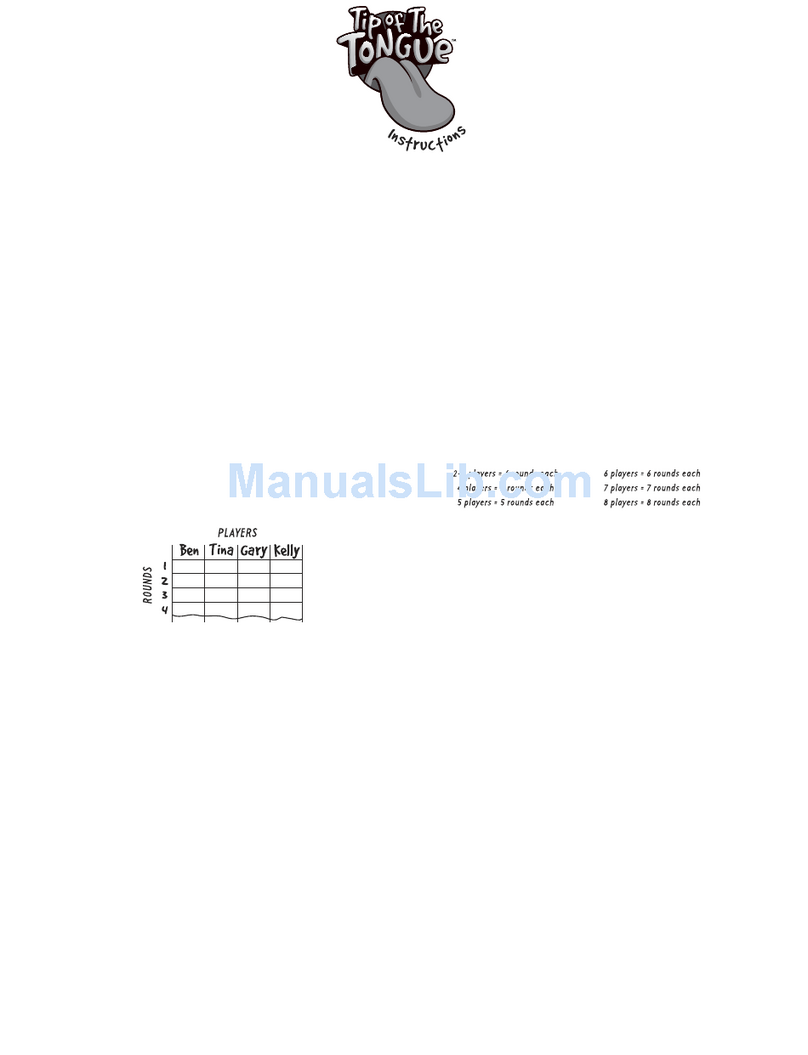
Fundex Games
Fundex Games Tip of the Tongue User instructions
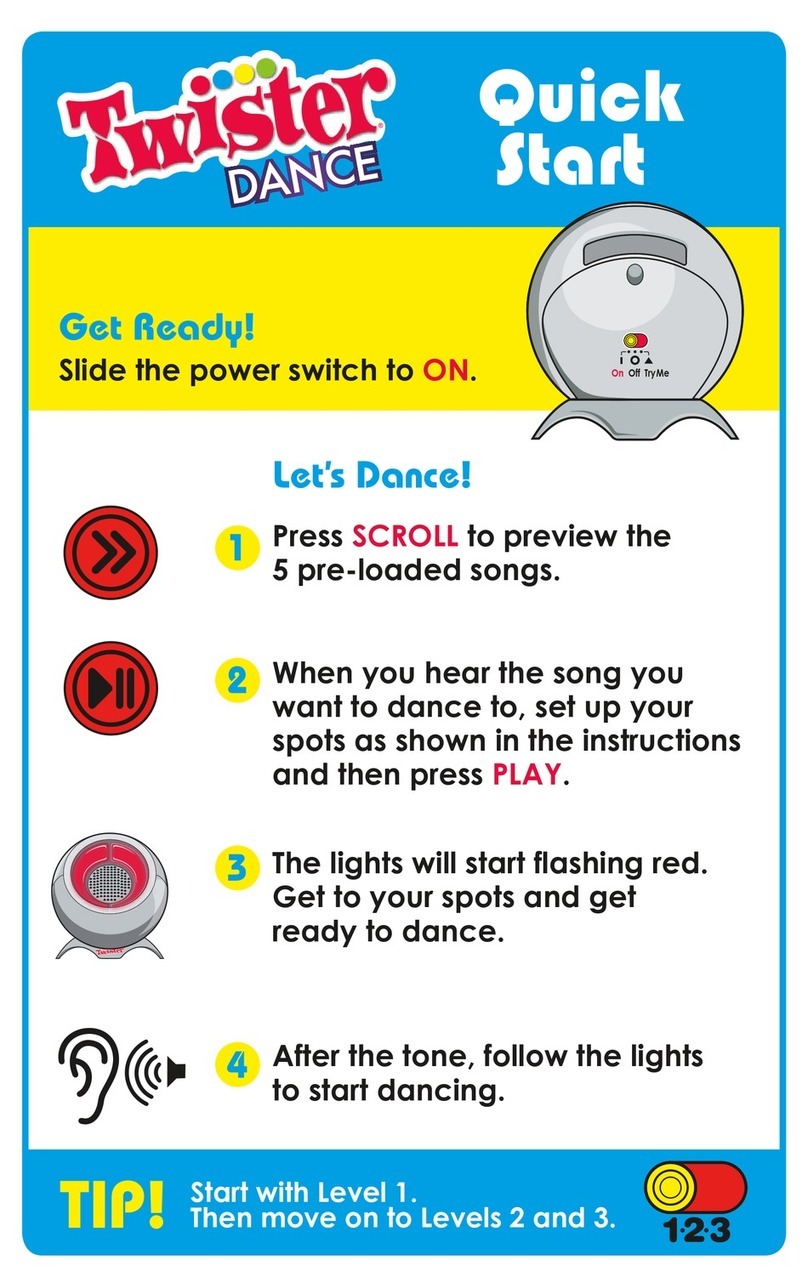
Hasbro
Hasbro Twister Dance quick start
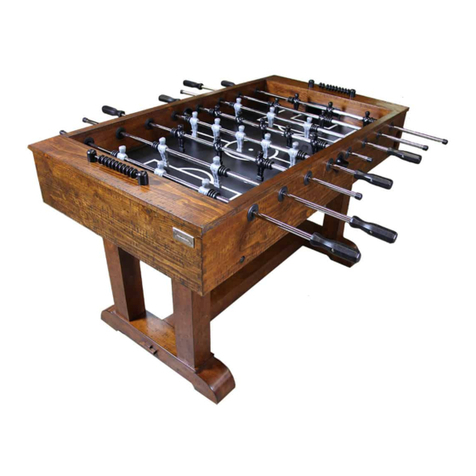
CHAMBERLAIN GAME TABLES
CHAMBERLAIN GAME TABLES PG-4007 Assembly instructions

LeapFrog
LeapFrog 100 Things That Go instruction manual
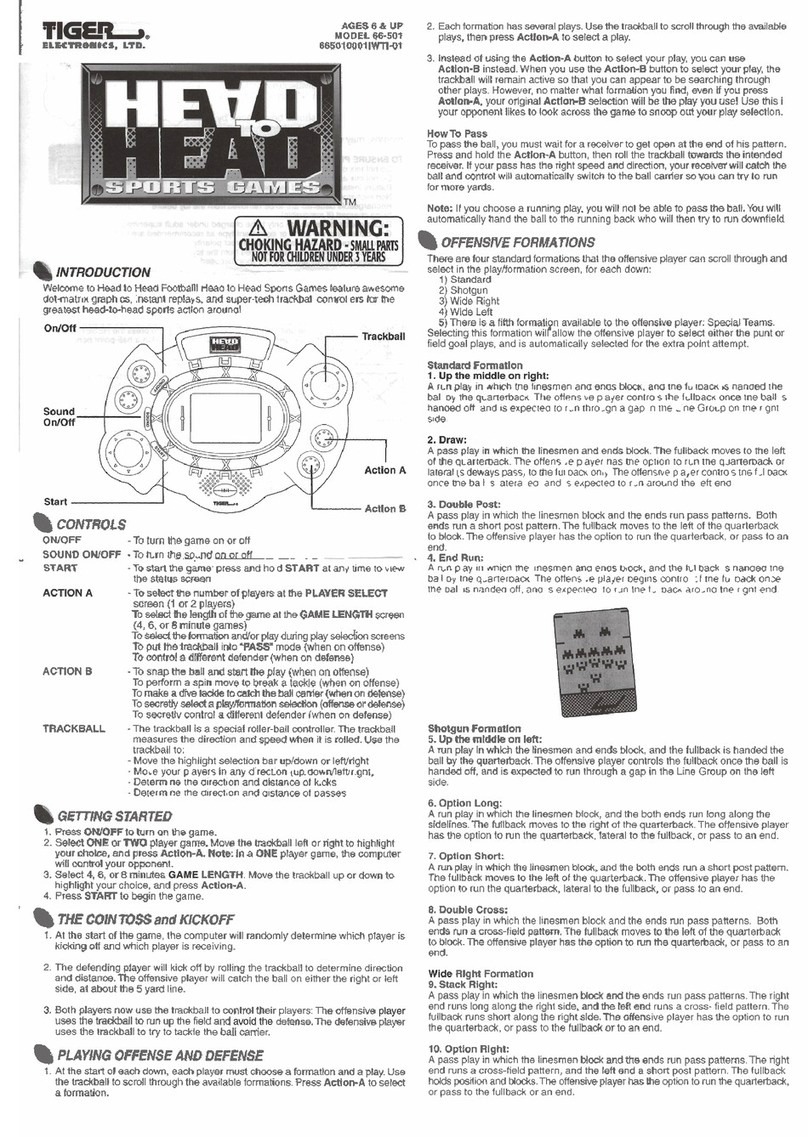
Tiger Electronics
Tiger Electronics 66-501 instruction manual
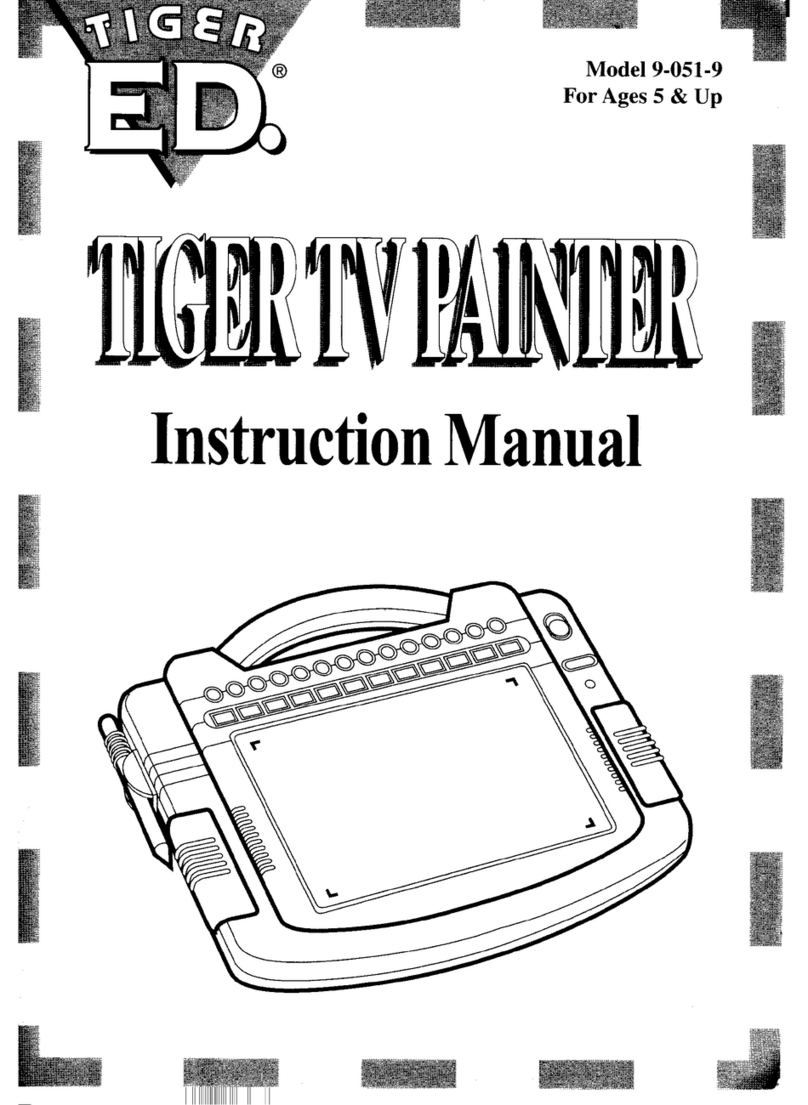
Tiger Electronics
Tiger Electronics 9-051-9 instruction manual
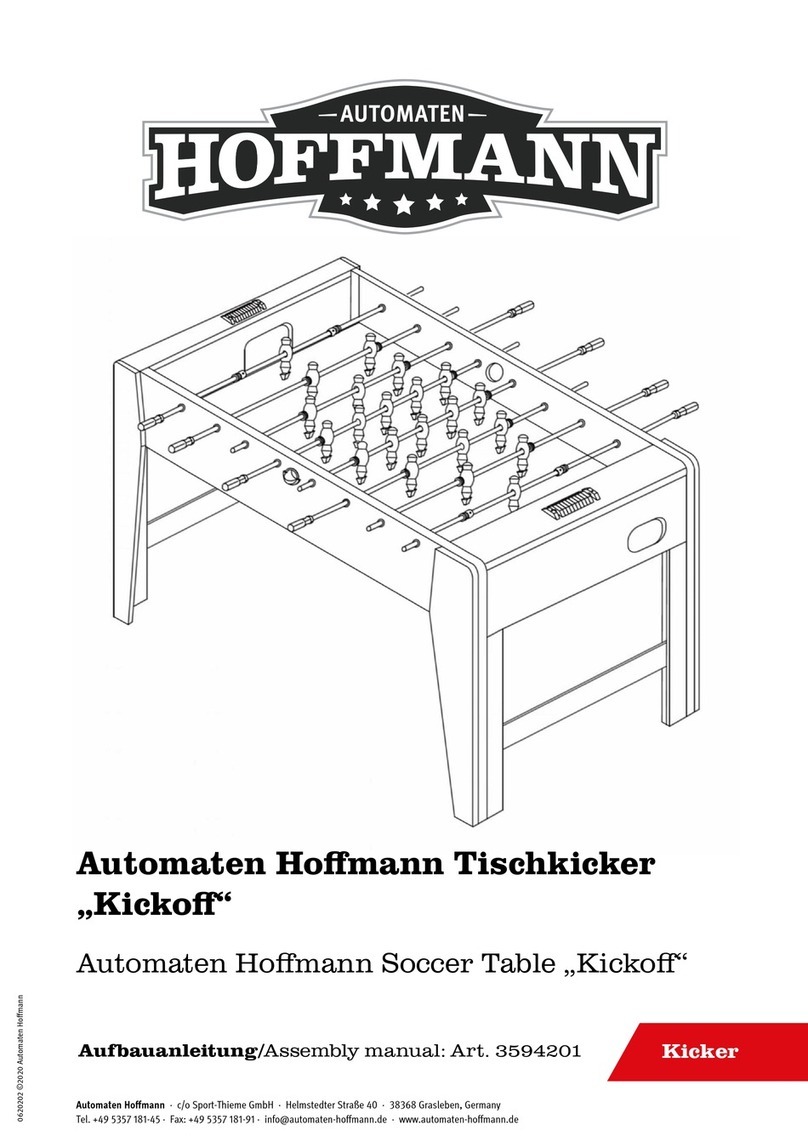
Automaten Hoffmann
Automaten Hoffmann Kickoff Assembly manual
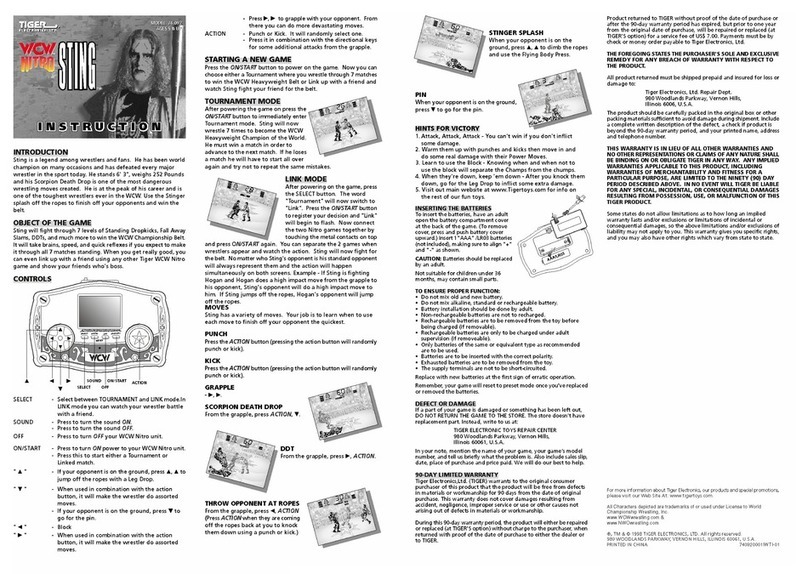
Tiger
Tiger WCW Nitro Sting 74-092 instruction manual

